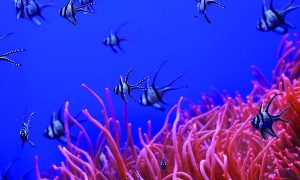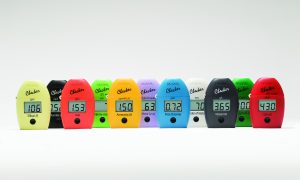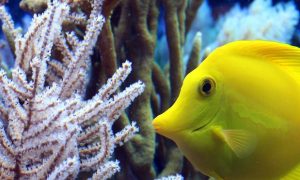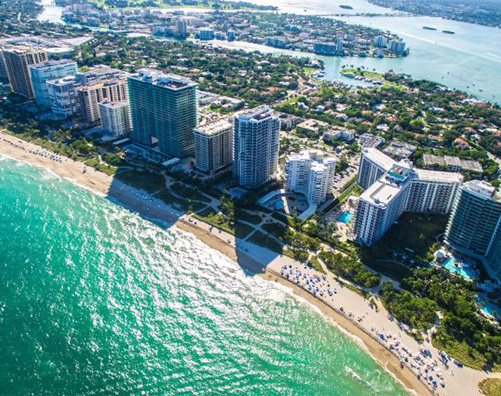

Much of the history of mankind has been marked by the influence of the sea on a man, however the relationship is changing today. Namely, human’s influence on the sea is more and more pronounced. All this is happening due to the intensive growth of human activities that are taking place concentrated on the coastal belt. Rapid growth of coastal cities, tourism development, industrialization, waste waters, construction port, sea transport, fishing, mariculture development, these are all activities that, if unmanaged and unplanned well, can have irreversible consequences.
The type and intensity of human impact on the sea are different. The most important ones are:
- climate change,
- destruction and alteration of natural habitats,
- overfishing,
- eutrophication,
- changes in hydrology and sediment flow.
The marine aquaculture sector can be broken down by:
I. main farmed species
(finfish, shellfish and algae)
and
II. technology deployed
An increase in aquaculture has resulted in growing regulatory pressure focused on discharges to natural bodies of water from aquaculture activities. Therefore, the sector is seeking ways of becoming more environmentally friendly.
An increase in aquaculture has resulted in growing regulatory pressure focused on discharges to natural bodies of water from aquaculture activities. Therefore, the sector is seeking ways of becoming more environmentally friendly.
Water quality is very important in fish farming as poor quality water can effect the health and growth of the fish. It is important that farmers pay attention to the water’s chemical and physical factors.
pH
pH is a measure of the hydrogen ion concentration in your water; the higher the concentration, the more acidic the water is. A neutral pH is 7; most fish can live in a general range between 6 and 8. Keeping the pH stable and in optimal ranges reduces stress on your fish and aquatic animals, helping them resist disease and tolerate other stressors. Maintaining an ideal pH can also dramatically improve growth, behavior, and overall appearance.
Alkalinity
Alkalinity is measured in degrees of carbonate hardness, commonly abbreviated as dKH. Critical to marine environments, alkalinity not only provides the carbonate ion required for calcium carbonate skeletal regeneration of coral reefs, but it also acts as a pH buffer against large changes in acidity. Designed as a more accurate alternative to chemical test kits, the HI772 provides quick, accurate results in a few easy steps.
Calcium
Required for the development of calcium carbonate skeletons of coral reefs, calcium is a crucial component of marine waters.
Nitrate
Nitrate is a by-product of the Nitrogen cycle. Excessive amounts of nitrates promote the growth of undesirable organisms including algae and dinoflagellates while insufficient amounts can lead to starvation in which SPS and other corals will show signs including the loss of color and paleness.
Nitrite
Nitrification is the biological oxidation of ammonia (ammonium ion) into nitrite followed by the oxidation of the nitrites to nitrates. The first step of this 2-step process is carried out by nitrifying bacteria. During this quick process, the ammonium levels drop while the nitrite levels increase. Since nitrite is just as harmful as ammonia, nitrite levels should be maintained at immeasurable levels. A mature biological filter should be able to keep nitrite levels low.
Phosphate
Testing for phosphates is standard practice for saltwater environment and provides valuable insight into your water chemistry to help ensure long-term coral health. Phosphates are one of the many forms of phosphorus compounds found in marine waters. Excessive phosphate levels can prevent calcification, skeletal formation, and growth of many coral species, particularly those referred to as SPS or small-polyp stony. In addition, high phosphate levels can cause nuisance algae growth. This can become problematic because algae often outcompetes sessile organisms for light, nutrients, and space, jeopardizing long term balance & health.
However, high concentrations of phosphates are detrimental to the environment; for this reason, it is closely monitored in natural waters.
The HI97105 Marine Master Photometer combines accuracy and ease of use in a simple, portable design. The advanced optical system provides lab-quality accuracy while its user-friendly design makes it the perfect photometer for your water quality testing needs.
The HI97105 is designed to accurately determine pH, Alkalinity, Calcium, Nitrate, Nitrite, and Phosphate level in marine biology applications.
✓ No warm up time needed before taking a measurement.
✓ Tutorial mode for easy step-by-step instructions.
✓ CAL CheckTMfor performance verification and calibration.
*Each HI97105 is supplied with: Sample cuvettes(2 pcs.), Sample caps (2 pcs.)Plastic stoppers (2 pcs.), Alkaline batteries: 1.5V AA (3 pcs.), Instruction manual & Meter quality certificate
HI97105
Marine Master Photometer
Waterproof Multiparameter Photometer
pH · Alkalinity · Calcium · Nitrate · Nitrite · Phosphate level
Upgrade to the Marine Master Photometer Kit (includes the CAL CheckTM Standards) for the most economical option for testing.
Each HI97105C is supplied with:
- Sample cuvette (2 pcs.)
- Sample cuvette cap (2 pcs.)
- Marine pH reagent, 30 mL dropper (1 pc.)
- Marine Alkalinity reagent, 30 mL (1 pc.)
- Marine Calcium reagent A, 30 mL (1 pc.)
- Marine Calcium reagent B starter kit (reagent for 25 tests)
- Marine Nitrate High Range starter kit (reagent for 25 tests)
- Marine Nitrite Ultra Low Range starter kit (reagent for 25 tests)
- Marine Phosphate Ultra Low Range starter kit (reagent for 25 tests)
- 1 mL graduated syringe with tip (2 pcs.)
- Minipipette with tip (1 pc.)
- 3 mL Pasteur pipette (2 pcs.)
- 1.5V AA Alkaline batteries (3 pcs.)
- Cloth for wiping cuvettes
- Scissors
- Instrument quality certificate
- Instruction manual
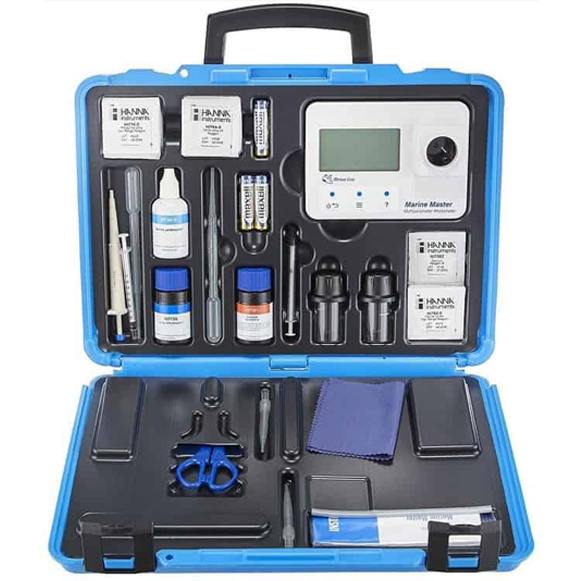

Author:
Nives Vinceković Budor, mag.ing.chem.ing.

